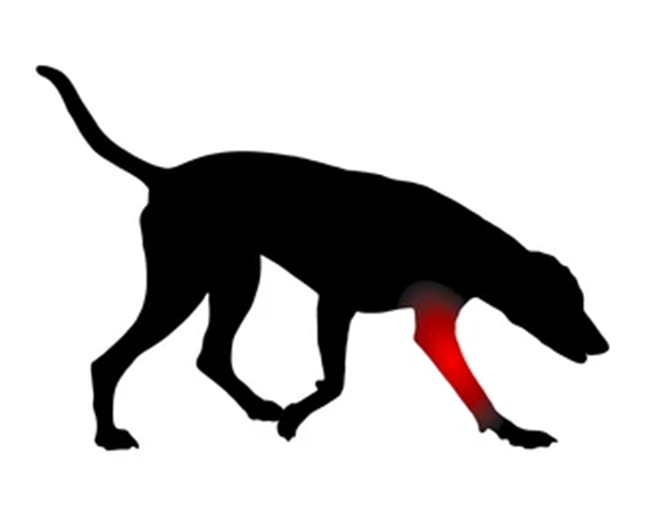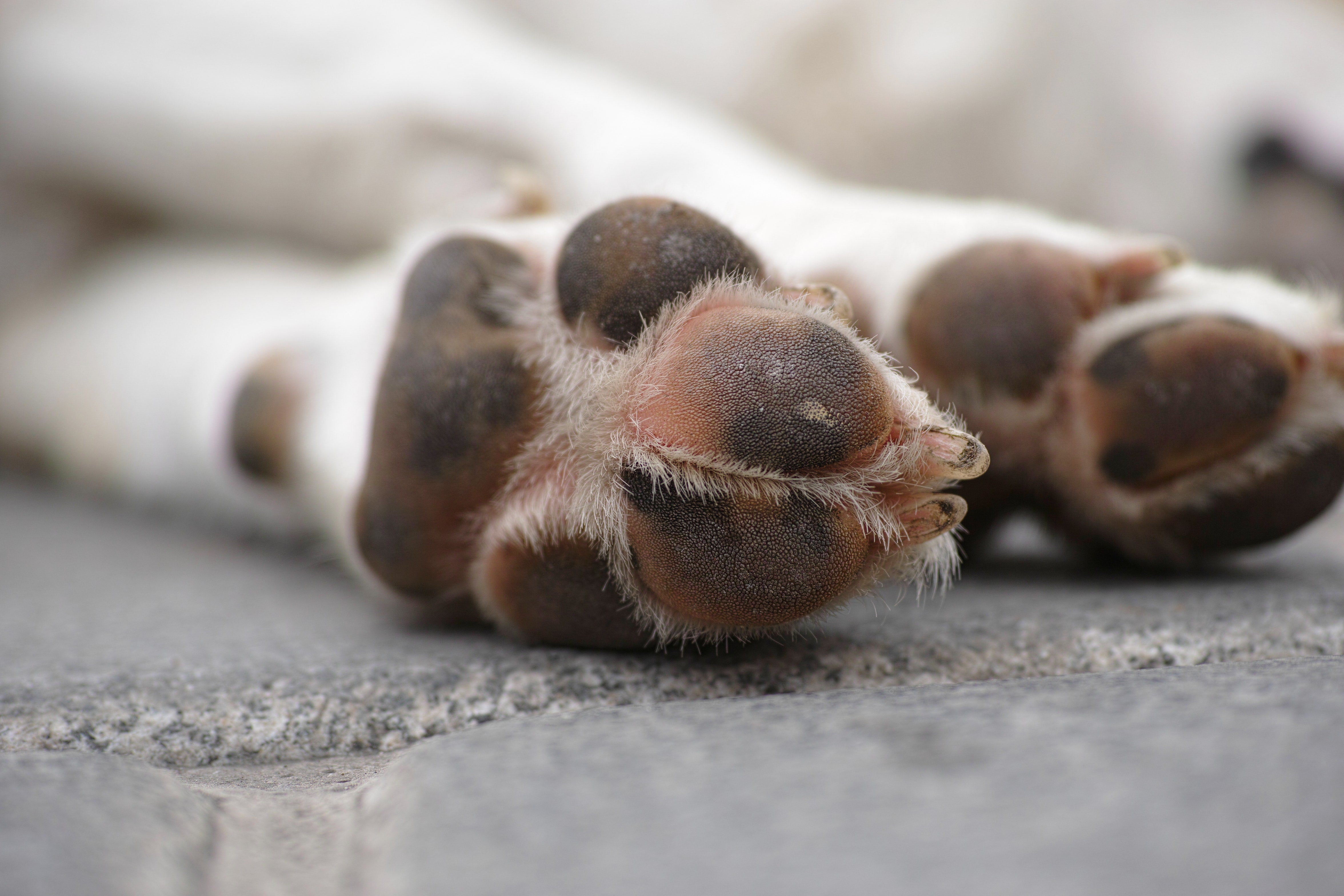When people think of a dog, they think of a happy canine running and jumping through the grass chasing after a ball or stick. While this is the case for most of our young and healthy dogs, there are often current or future joint problems lurking in the background that we have not even noticed yet.
So, how can you learn more about your dog’s joint health and how you can help them? Keep reading to find out!
Signs of Joint Pain in Dogs
Our canine companions can sometimes be skilled at hiding their pain, which is why it is important to know and recognize the signs of your dog’s discomfort. Did you know that over 80% of senior dogs are already showing symptoms of osteoarthritis and joint pain? So, if your dog is over the age of seven and displaying any of the below signs, then it may be time to take them to the vet for a checkup and arthritis screening.
- Panting excessively, even at rest
- Pacing and having trouble laying down or getting comfortable
- Decreased appetite
- Licking over the affected joint
- Difficulty walking, getting onto/off furniture or stairs
- Muscle loss in the hind end
- Irritability when touched over an affected area
No one wants to see any of these symptoms in our dogs, so making an appointment with a vet is crucial in managing their pain and discomfort early on. If you address the problem quickly, you could potentially slow down the progression of their joint degeneration, osteoarthritis, and pain.
Joint Problems Over Time
Just like humans, dogs are also susceptible to the woes of aging like gray hairs, vision and hearing loss, joint pain, and arthritis. Not only is osteoarthritis a common cause of discomfort in dogs, but our active and overweight canines are prone to joint injuries as well. These things are just a part of life, but are there ways to help? Yes! But first you need to determine the root cause.
Dog owners may wonder, “Why is my dog limping?” or “How can I prevent arthritis?” These are great questions, and this article will dive deeper into joint care and management and why our dogs develop arthritis.
The answer is one of two reasons, or even both: developmental and degenerative joint problems. There are big differences between the two!
Developmental joint problems stem from genetic predisposition conditions.
- Hip or elbow dysplasia: affecting “ball and socket” joints, where the head of the femur or humerus does not fit into the socket appropriately, creating wear and tear of that joint.
Degenerative joint problems normally appear when there has been an injury to a joint.
- Cruciate ligament injury (full or partial tear): common injury among highly active or overweight/giant dogs. Remarkably like an ACL tear in humans.
- Meniscal injury
- Any injury to a joint in general (i.e., sprain)
Even if a dog does not have hip or elbow dysplasia, any injury to a joint will result in future degenerative changes. So, if your dog has an old cruciate injury, even if surgically repaired, they will eventually develop arthritis in that joint. This is an inevitable occurrence.
One important thing to understand is that osteoarthritis and hip dysplasia are not curable, but they can certainly be supported and managed.
Joint Care
If you have taken them to the veterinarian, and they have confirmed and diagnosed your dog with arthritis. Now what? Your vet should have a treatment plan and recommendation for your dog, typically consisting of light exercise, weight management, a joint supplement and medication if needed. In some cases, support braces can also be effective.
As your dog’s owner, caring for them is your main priority. You may be wondering how you can keep your beloved companion feeling younger for longer. Well, there are ways, but keep in mind that even if you take all the preventative measures possible, injuries and old age do still happen.
A Well-Balanced Joint Healthy Diet
You can help them feel young and strong, by feeding them a well-balanced diet that is complete and appropriate for their age and body condition. A diet that consists of glucosamine, chondroitin, fish oil and omega-3 fatty acids such as EPA and DHA are best suited to target joint health.
Low-Impact Exercise
Providing consistent, low-impact exercise is great for keeping your dog’s joints strong and limber. Activities that are rigorous and physically exerting on the dog, may be rewarding but, are much more likely to lead to injuries of the knees and wrists. If possible, swimming in calm or still water such as a pool for short periods of time is one of the best forms of exercise for them because there is no impact on the joints.
Weight Management
Overweight dogs are highly susceptible to early arthritis and joint injuries. The additional weight is hard on their body’s and means more pressure on their joints. Not to mention, being heavier than they should be, leading to another issue like heart disease. Keeping off unnecessary weight is best for their overall health. As you might imagine, having extra unnecessary pounds applying pressure to their already sore and weak joints will only make things worse.
Obese and overweight dogs are at higher risk of heart issues and collapse, potentially leading to an inferior quality of life in their future.
Joint Supplements
The real hero of joint health is to incorporate joint supplements into your dog’s daily routine. This can be incredibly beneficial for your canine companion. Even if your dog is not showing signs of arthritis or joint pain, it is still beneficial to start them on a supplement for their joints. Especially if they are a breed that is prone to having orthopedic issues, such as Labs, German Shepherds, Newfoundland’s, Pitbull’s, and Golden Retrievers, to name a few.
Bottom Line Prevention
As a form of preventative joint care, owners should consider giving their dog’s joint supplements before they show signs of arthritis. It is helpful for medium or larger breeds that are predisposed to hip and joint problems or athletic and highly active dogs, because these pups have extremely high likelihoods of developing arthritis at an earlier age than others. Many people do not consider this, but small and toy breeds are just as likely to have an injury as larger ones. Small breeds are often afflicted with luxating patella’s (dislocated kneecaps) or injury while playing since they are often smaller and more fragile.
The bottom line is, every dog, no matter what the breed, age or body condition will still run, play, and use their body’s, meaning, joint care and health should be a part of every dog owner's priority. Do not hesitate to call your veterinarian to set up an appointment to discuss your dog and how you can protect their joints today!





